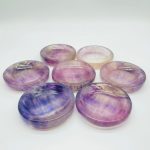
Introduction
Imagine a window into the ancient world, a gateway to a time when life bustled on Earth in myriad forms. Amber, a fossilized resin from ancient trees, offers such a glimpse. Within its golden embrace, perfectly preserved insects, plants, and microorganisms are trapped, providing an invaluable record of life’s past.
Amber: An Enchanted Ecosystem
Amber is formed when resin oozes from the bark of conifer trees, typically the extinct species Pinus succinifera. As the resin hardens, it traps organisms that come into contact with it, creating a time capsule that protects them from decay and the ravages of time.
Fossil Insects in Amber
Insects are among the most common inclusions in amber. They represent a wide range of taxa, including beetles, flies, mosquitoes, and ants. The Baltic Sea region is particularly renowned for its amber deposits, which have yielded an estimated 15,000 insect species.
The Science of Studying Insects in Amber
Scientists use amber-preserved insects to study the evolution, ecology, and behavior of ancient insect communities. By examining the size, morphology, and dietary habits of these specimens, they can gain insights into the paleoenvironment and the role of insects in past ecosystems.
Benefits of Studying Amber with Bugs
Studying amber with bugs offers numerous benefits for scientific research and education:
- Provides direct evidence of ancient insect diversity and evolution
- Aids in understanding the paleoenvironment and climate change
- Informs the study of modern insect ecology and conservation
- Offers a tangible connection to the past, fostering appreciation for biodiversity
Table 1: Amber-Bearing Deposits Around the World
| Region | Location | Age (Million Years) |
|---|---|---|
| Baltic Sea | Poland, Lithuania, Russia | 35-55 |
| Dominican Republic | Cordillera Central | 15-25 |
| Myanmar (Burma) | Kachin Province | 100-145 |
| Lebanon | Jeita, Byblos | 132-138 |
| Canada | Alberta, Yukon | 65-90 |
Table 2: Insect Diversity in Baltic Amber
| Insect Order | Number of Species | Percentage of Total |
|---|---|---|
| Coleoptera (Beetles) | 6,000 | 38% |
| Diptera (Flies) | 2,500 | 16% |
| Hymenoptera (Ants, Bees, Wasps) | 2,000 | 13% |
| Lepidoptera (Butterflies, Moths) | 1,500 | 10% |
| Others | 3,000 | 23% |
Table 3: Benefits of Studying Insects in Amber
| Benefit | Importance |
|---|---|
| Evolutionary insights | Reveals patterns of diversification and extinction |
| Ecological understanding | Informs about ancient food webs and interactions |
| Climate record | Provides evidence of past environmental conditions |
| Educational value | Connects learners to the past and promotes biodiversity awareness |
Challenges in Studying Insects in Amber
Despite its immense value, studying insects in amber poses certain challenges:
- Limited sample size: Amber deposits are not always abundant or accessible.
- Preservation bias: Not all insects are equally well-preserved in amber.
- Taphonomic processes: Insects may be distorted or damaged during the fossilization process.
Emerging Applications: Amber-Inspired Technologies
The study of amber with bugs has inspired the development of novel technologies and applications:
- Biomimetics: Amber-structured materials are being developed for use in optical devices, sensors, and medical implants.
- Microfluidics: Amber-inspired designs are improving the efficiency and sensitivity of microfluidic devices for biological analysis.
- Terahertz imaging: Amber-based materials have potential applications in terahertz imaging, enabling the detection of hidden objects and defects.
Table 4: Emerging Applications Inspired by Amber with Bugs
| Technology | Inspired by | Applications |
|---|---|---|
| Biomimetics | Amber microstructure | Optical devices, sensors, medical implants |
| Microfluidics | Amber flow channels | Biological analysis, diagnostics |
| Terahertz imaging | Amber optical properties | Detection of hidden objects and defects |
Conclusion
Amber with bugs is a captivating and informative window into the past. Its preservation of insects and other organisms offers invaluable insights into the evolution, ecology, and biodiversity of ancient ecosystems. By studying these natural wonders, we not only learn about our origins but also inspire innovative technologies that have applications in diverse fields. As we continue to explore the fascinating depths of amber, it promises to unlock new secrets and enrich our understanding of the beauty and complexity of life on Earth.




























